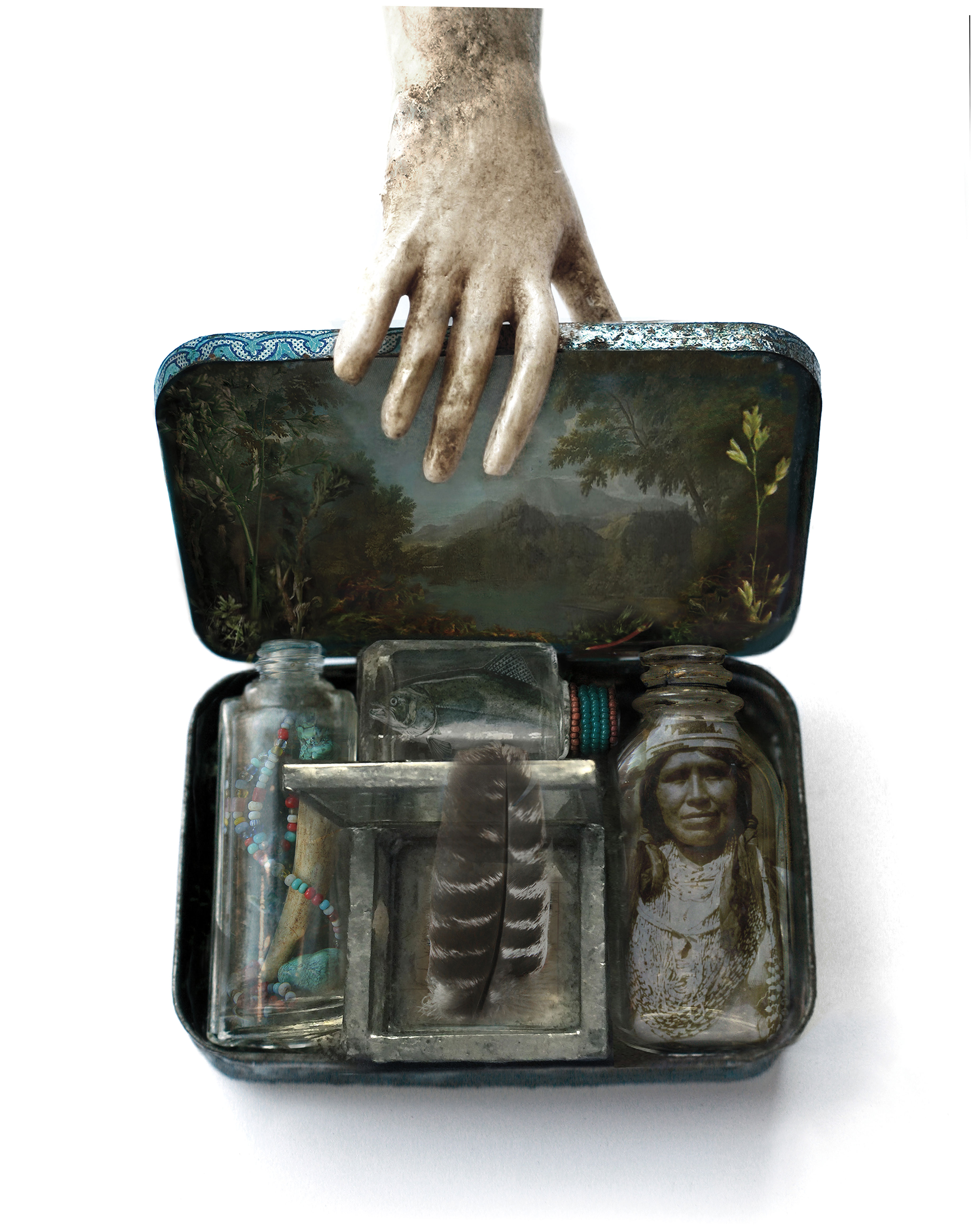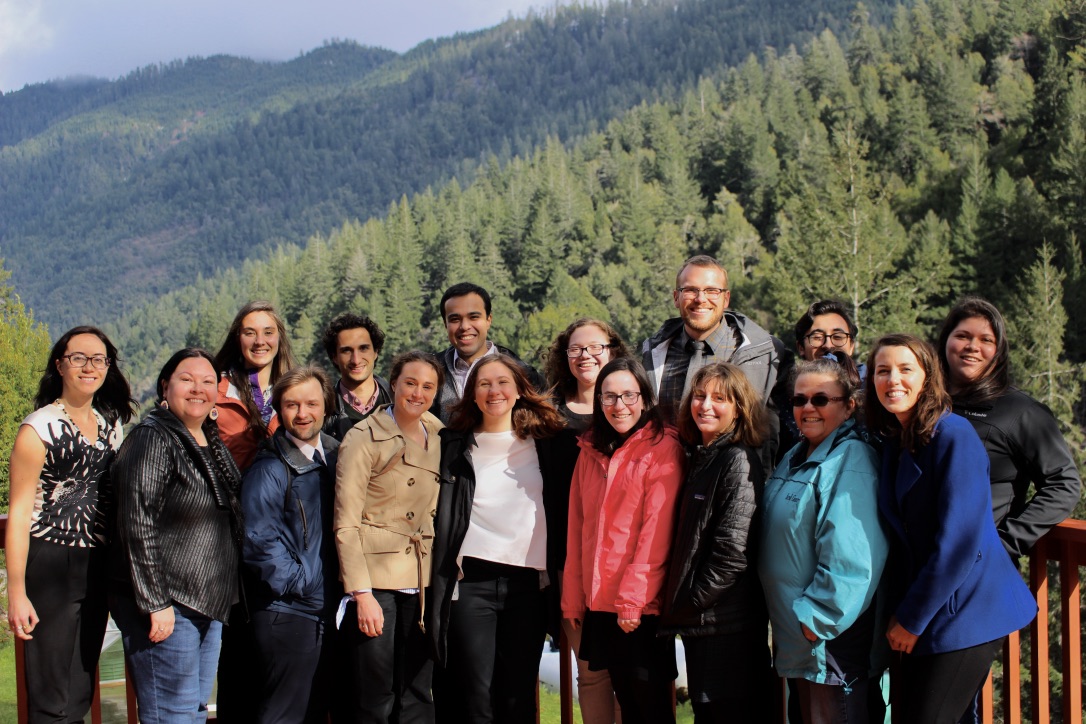Stanford Law Students Learning Law with the Yurok Tribe
You might pass through Yurok Country while driving up 101 toward the northern tip of California, perhaps stopping at the tribal-owned casino in Redwood National and State Parks or fishing in the Klamath-Trinity River. It’s a green and lush landscape dominated by redwood trees and water, the river flowing to the Pacific.
“The main geographic feature is the Klamath River that runs right through the middle of the reservation. When you look at a map, the river looks a bit like an earthworm or snake on the land,” says Ben Gibson, JD ’20, who visited the Yurok twice last spring quarter—once as part of the course Federal Indian Law and again on a pro bono trip organized by the Native American Law Students Association (NALSA).
Gibson taught at the Pine Ridge Indian Reservation before coming to Stanford Law. It was there, he says, that he saw how the law affected the lives of tribal members.
“There were certain regulations in place, things that could and could not be done within the school and the community. I wanted to understand those,” he says. “So much of what drove me to law school was seeing how communities like that were impacted by law.”
Most Americans don’t think much about the 570 or so sovereign Indian nations within the borders of the United States. But each of those tribes represents a distinct people and government—and legal system.
“Native Americans have their own legal systems because they’ve always had their own legal systems, which is, I think, important to point out,” says Greg Ablavsky, associate professor of law and an expert on early American legal history, particularly on issues of sovereignty, territory, and property in the early American West. “Each Native community has its own set of laws and legal traditions.”
The study of how those legal systems intersect with U.S. state and federal law is Ablavsky’s domain.
“The great Indian law scholar Phil Frickey talked about the fact that federal Indian law is the law that mediates between colonialism—the history of dispossession—and constitutionalism—that is, the system by which we think legitimate government power operates,” says Ablavsky. “The class gets to that core challenge: How do you have a nation that is supposedly founded on the consent of the governed? We have people within the boundaries of the United States who never consented to be part of it. Federal Indian Law grapples with that question—and it’s a very hard question. It’s hard to know what the answer should be.”
Since coming to Stanford Law three years ago, Ablavsky has taught Federal Indian Law each year. For the second year running, he offers his students the opportunity to visit the Yurok Tribe—primarily to meet tribal leaders and learn about their traditions firsthand.
“I think there’s a perception around Native American issues that it’s in the past. So these issues don’t get a lot of attention and aren’t well-known.”
— Autumn Bordner, JD/MS ’19
“So much of the class is about a place many of the students have never been to. That’s why I introduced the trip. It makes real some of the abstract doctrines that we cover in class,” says Ablavsky.
In winter 2018, Ablavsky added a policy practicum Federal Indian Law: Tribal Code Development Assistance Project. The aim of the practicum is to assist the Yurok by conducting research related to drafting tribal taxation code. Add to that the very active SLS chapter of Native American Law Students Association, which organized a pro bono trip to assist the Yurok with criminal record expungement in 2017 and then estate planning this year, and there’s both a real bond building between Stanford Law and the Yurok—and enthusiasm for learning about issues that they and other Native people face in the United States.
“When I arrived as a 1L, it was a perfect storm. Professor Ablavsky came that year. It was the first time SLS had a faculty member dedicated to teaching Federal Indian Law,” says Savannah Fletcher, JD/MS ’18, who served as NALSA co-president for the last two years and helped organize both pro-bono trips—and has gone on the class and practicum trips. “All of this has really grown the awareness of Indian country by our students and the entire community at the law school. It’s not only Native students who are studying. This has allowed NALSA and the wider law community to better serve Indian country.”

JARED CRUM, JD ’18, DESCRIBES A LARGE CONFERENCE TABLE that sits in the Yurok tribal justice center. “It comes apart into four or six pieces, but when it is put together the pieces form the Klamath River,” says Crum, who is now clerking in the Southern District of Texas in the Rio Grande Valley. “It shows you how important keeping their community together and themselves tied to their culture is to the Yurok.”
Crum joined Fletcher as co-president of NALSA last year and, like her, has taken Ablavsky’s practicum and class.
“One of the foundational principles of federal Indian law is sovereignty—that tribes retain their sovereignty, which has never been divested,” he explains. “But another foundational principle is that Congress has plenary power over Indian affairs. And sometimes these two principles can be in tension. But seeing that tension play out is something that makes the class intellectually stimulating.”
Having the opportunity to meet tribal leaders and the chief justice of the Yurok courts and to hear from them directly about how their judiciary functions was invaluable, he says.
“We’ve been able to see how the Yurok justice department works and meet with their chief judge and see how she holds court in a way that would be perfectly recognizable to people coming to a court-setting outside an Indian tribe, but also in ways that are specific to how the Yurok people work,” says Crum, explaining that mediation is commonly used. “She is able to impress upon people the importance of coming together and healing whatever dispute has happened, which is the way a lot of Indian tribes run their justice systems. It re-ties the community bonds at the end of the dispute so that everyone can move on and stay a cohesive, tight-knit community.”
“This is the second year that Dean Magill has been kind enough to support the Federal Indian Law class in going on the trip to the Yurok reservation,” says Fletcher. “It’s tremendously helpful to see firsthand how tribal justice plays out and how tribal government operates. Chief Judge Abby Abinanti knows the people coming into her courtroom and uses that knowledge and awareness of the community as a whole to find solutions that heal. It’s restorative justice. And we can all learn from it.”
Fletcher, who is now clerking for the Alaska Supreme Court and plans to eventually practice in tribal law, also visited the Yurok for the policy practicum.
“A big challenge in Indian country in general is that tribes struggle to tax when the state so often taxes the same things a tribe would aim to tax,” she explains. “So, the practicum was a chance to dive into the specific situations of the Yurok tribe and help to figure out how they can better support their government through taxation on their lands.”
But there was a lot to learn about the Yurok before the practicum’s work could get started.
“At the beginning of the practicum the in-house counsel of the tribe, Amy Cordalis, visited campus and took the time to explain the needs of the tribe and what they were hoping to get out of the project. This was very helpful and gave us motivation and clear objectives,” says
Autumn Bordner, JD/MS ’19.
The students in the practicum visited the Yurok tribal council last spring to present their findings. A follow-up practicum will be offered this year to continue the work.

During this year’s pro bono trip, students helped Yurok tribal members with estate planning. And many of the issues raised by the Yurok were unique to Native Americans.
“In Indian country, there are cultural objects and other ritual objects that people want to keep in the family. These have probably been in the family a long time and might have been used in religious ceremonies or other cultural and community events,” explains Crum. “We made sure in writing the wills that they were specific to Indian country, and specific to the Yurok needs.”
Gibson found that in some cases, where families had lived on the land for many generations, the parcel had been divided so often that families needed to get creative.
“With one family, the issue was figuring what to do with a very small parcel and two sons. It was interesting sorting through it,” he says. “One son got the land and the other got the boat, so it was okay.”
Fletcher found the simple interactions with the Yurok people—on all of her trips—as informative as the formal meetings.
“Over a meal at the historic Requa Inn, one woman, whose family has lived for generations at the mouth of the Klamath where it goes out to the ocean, told us about the severe drop in the salmon population and how it was hitting the Yurok hard. But she felt the loss deeply—in her bones and dreams. Another time we were making a big meal in the original tribal offices and the tribal chairman joined us and we learned Yurok words. These trips have led to a real partnering with the community,” she says.
The other students echo her sentiments.
“As a first-year law student, it’s been a gift to go up to the Yurok reservation on two occasions—to get to know tribal members and hear about the work that’s being done there and to see the work that their attorneys and judges are doing,” says Gibson. “And the class has given me the opportunity to really dive into the doctrine and see how it impacts the lives of families in the community.”
“There are millions of American Indians around the country and they all have legal affairs that need to be taken care of and need good lawyering,” says Crum. “And Indian tribes interact with millions more Americans. So, this is not an insubstantial area of law. I’m really glad that students here are able to learn this area of law.”
“I think there’s a perception around Native American issues that it’s in the past,” says Bordner. “So, these issues don’t get a lot of attention and aren’t well-known. Having the opportunity to lend whatever skills I can to the Yurok tribe and the opportunity to meet and make those connections has been very meaningful.” SL

